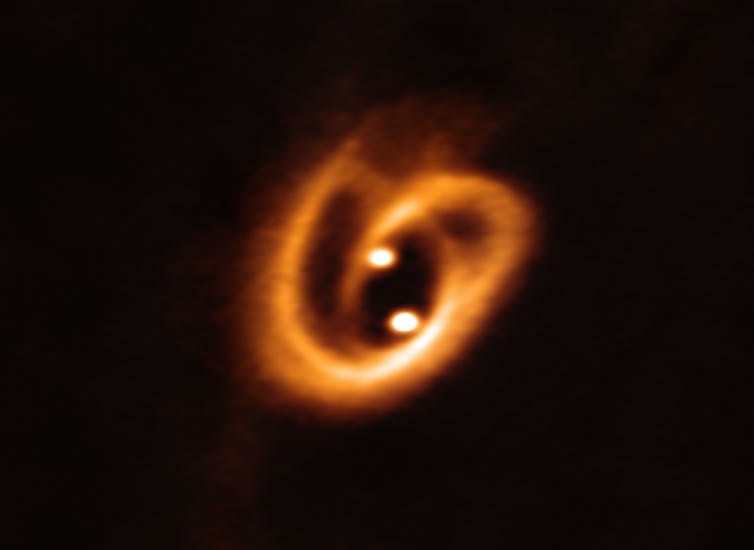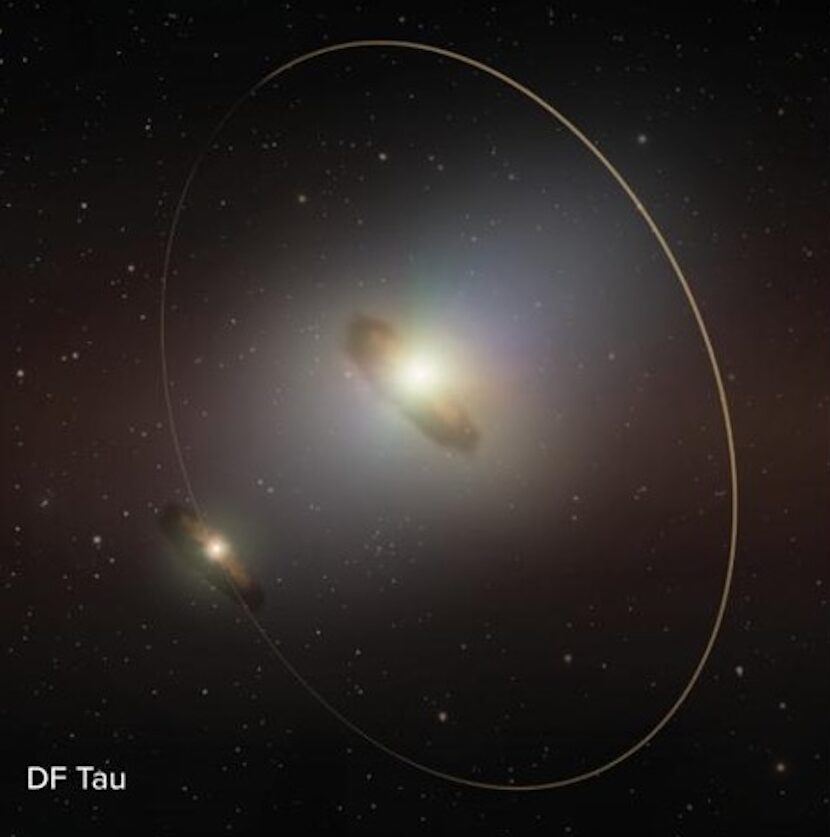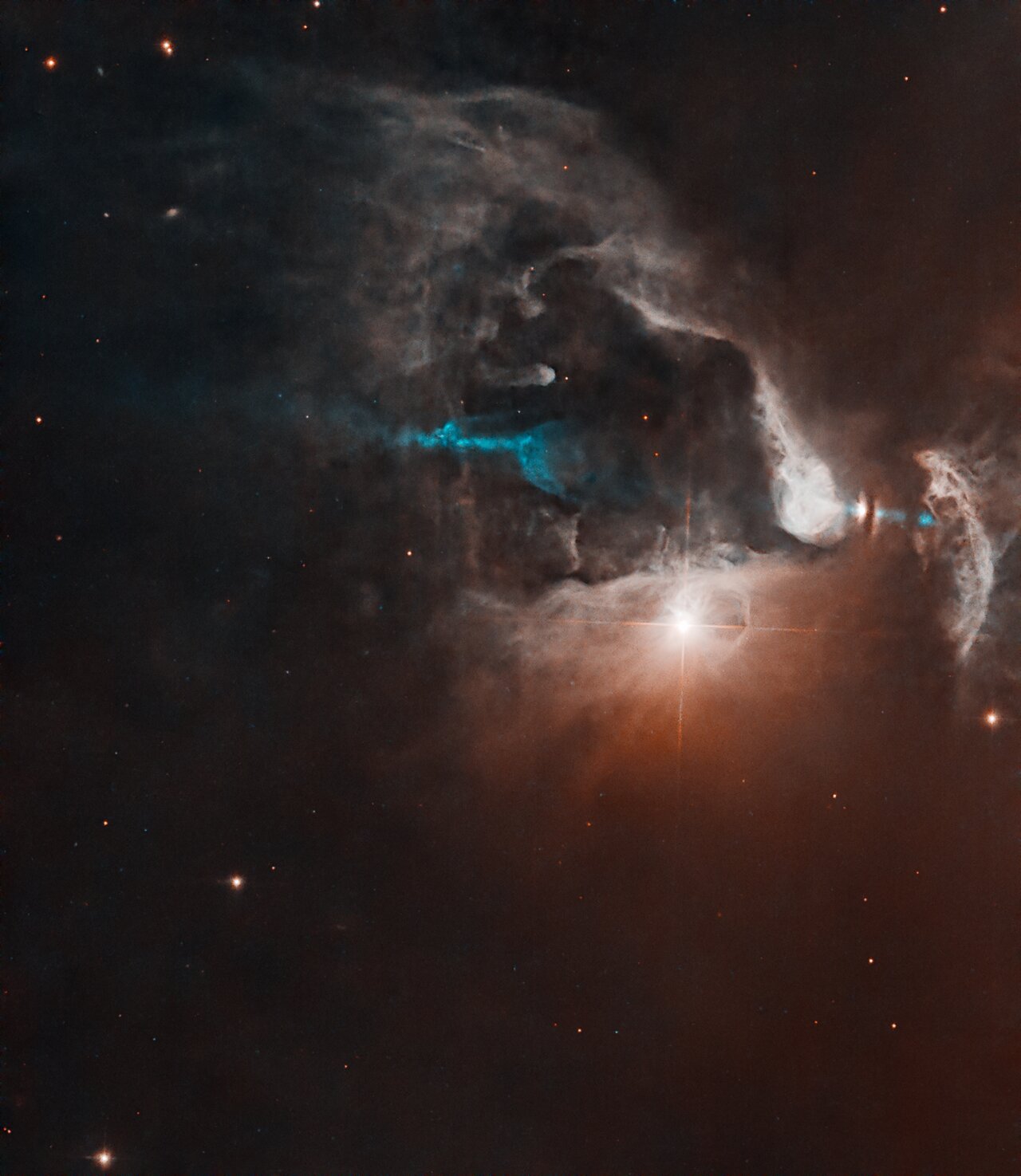Astronomers have gained new insight into the formation of planets around twin stars that orbit one another.
Despite the fact we are most familiar with planets orbiting a single, central star — like the arrangement of our solar system — over 50% of stars in the cosmos exist in a binary system, meaning they have a companion star. These binary systems can also have planets around them that either circle one of the stars in a “circumstellar orbit” or loop both of the stars in a much wider “circumbinary orbit.”
Using the Atacama Large Millimeter/submillimeter Array (ALMA) — made of a combination of 66 radio telescopes located in northern Chile — and the Keck II 10-meter telescope in Hawaii, astronomers gathered data of two twin star systems. What they found could transform our understanding of the conditions that can either nurture or inhibit such planet formation in binary systems.
Related: Like the 90s, binary stars are back in style
Are two stars better than one for planet birth?
Binary star formation isn’t terribly different from single star formation. These bodies are created when dense clouds of cool, interstellar gas form overly dense patches that gather more mass, eventually collapsing under their own gravity to birth a stellar infant called a “protostar.“
This protostar continues to gather material from its prenatal cocoon of gas and dust until it has enough mass to trigger the nuclear fusion of hydrogen to helium in its core, the process that defines a main sequence star. Importantly, some of these interstellar clouds are vast enough to allow two or even three main-sequence stars to form within them.
Then, whatever material is left over from that cloud of gas and dust after the formation of these stars surrounds them as what astronomers call a “protoplanetary disk.” As the name suggests, planets form from these disks. Like planets themselves, the disks can be circumstellar, surrounding just one star, or circumbinary, surrounding the whole system.

Scientists are currently unaware of the factors that allow these disks to stick around long enough to birth planets, nor are they sure what eventually causes the disks to dissipate. As it turns out, circumstellar disks in pre-main-sequence-protostar binary systems could be the ideal laboratories to investigate these questions.
Properties of these early disks, such as their sizes, substructures and even their inclinations (when compared to protostar characteristics like rotation speed and magnetic field strength) can reveal details of the complex interactions that shape such planet-birthing environments.
Additionally, the sheer ubiquity of multi-star systems in the universe means studying planet formation around twin stars is vitally important to understanding this process on a deeper level.

One of the binary systems the team honed in on with ALMA and Keck II was D.F. Tau, made of two protostars with masses around 0.6 times that of the sun located around 150 light-years from Earth in the Taurus star-forming region.
The two stars of D.F. Tau are separated by a distance equivalent to around 14 times the distance between Earth and the sun; they take around 44 Earth years to complete their highly elongated orbits.
Fascinatingly, ALMA detected that the interstellar cloud responsible for birthing these stars had split into two circumstellar disks. One is magnetically locked to the central star, D.F Tau A, and actively feeds it material to facilitate its growth. The other seems to have become detached from the other star, D.F Tau B. The central region of the disk appears to be eroded as the young star spins rapidly.
This suggested to the team that there could be a link between the rotation of young stars as well as the magnetic locking of disks to them, and, thus, the early dissipation those of disks. In addition to this, it seems like misalignments between D.F. Tau’s orbit, its circumstellar disks, and the inclinations of its stars may impact the disk’s general evolution.

The second binary system the team focused on was the very young, 2.8 million-year-old F.O Tau system (for context, recall that the solar system is 4.6 billion years old).
This system is also located roughly 450 light-years away from us. Its stars, F.O Tau A and B, are on a more circular orbit than those of D.F Tau. They are also more widely separated, with F.O Tau B orbiting F.O Tau A at a distance equivalent to around 22 times the distance between Earth and the sun.
Using ALMA, the astronomers found that the disks of F.O Tau are aligned with the orbit of this binary. Both stars exhibit rotational speeds on the slower side, and the two circumstellar disks remain magnetically locked to their protostars. This indicates systems like F.O Tau, with slower stars and more circular orbits, may be better suited to the formation of planetary bodies around both of its stellar components than speedy systems with elongated orbits are.
ALMA observations of other single and binary star disks have revealed intricate sub-structures within the disks, including features like spiral patterns, gaps, and ring formations.
Even though, at the moment, these structures aren’t visible for D.F. Tau and F.O. Tau, determining the more large-scale properties in these two close binary systems has significantly advanced our understanding of planet formation environments.
The team’s results were revealed at the 244th meeting of the American Astronomical Society (AAS).
